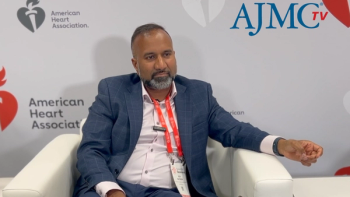
CEPHEUS Trial Data Reinforce DVRd as New Standard for Multiple Myeloma: Saad Z. Usmani, MD, MBA
Continuing his interview about these results, CEPHEUS lead investigator Saad Z. Usmani, MD, MBA, FACP, FASCO, highlights the minimal residual disease negativity findings.
CEPHEUS lead investigator Saad Z. Usmani, MD, MBA, FACP, FASCO, chief of the myeloma service at Memorial Sloan Kettering Cancer Center, highlights the minimal residual disease (MRD) negativity findings, focusing on the 10-5 MRD negativity rates and their sustainability. Overall, DVRd led to an overall MRD negativity rate of 60% compared with 39% with VRd.
The ongoing CEPHEUS trial (
This transcript was lightly edited for clarity; captions were auto-generated.
Transcript
In the CEPHEUS trial, which subgroups derived the most benefit from DVRd, and how might this guide future patient selection?
In terms of the results, the CEPHEUS trial analysis that [was] presented looked at the overall MRD-negative rates in patients who got to complete response or better and then also looked at sustained MRD negativity rates at the 12-month and the 24-month marks. For the purpose of my discussion right now, I'll focus on the 10-5 MRD negativity rates and sustainability. What was seen across the board in this transplant-ineligible patient population was a statistically significant and higher proportion of patients getting to MRD negativity. Overall, MRD negativity, for example, being 60% vs 39%. Sustaining that MRD negativity beyond 12 months was 47% vs 28%, and sustaining it beyond 2 years, or 24 months, was 40% vs 23%. That ends up translating into the better progression-free survival benefit.
Now, when we look at subspecified, prespecified subgroups, most are generally consistent across the board; all subsets benefited. However, there were certain smaller subsets of patients who had high-risk cytogenetics, for example; there the benefit was not as clear compared to the other groups.
How did DVRd compare with VRd in MRD negativity and PFS across cytogenetic risk subgroups?
In terms of MRD negativity rates, this particular analysis looked at the overall transplant-ineligible patient population; the major proportion of patients was standard risk. We only have very few high-risk patients in this subgroup analysis, and that's why we did not see as clear of a benefit in terms of hazard ratio for those patients.
Were the MRD and PFS results consistent with expectations or were there surprises?
I think it was actually good to see that within this transplant-ineligible patient population, we found similar results to the whole intent-to-treat patient population, and this is consistent with what was already reported on this trial earlier this year. More importantly, when we looked at the safety information when it comes to cytopenias or infection risk or sensory neuropathy rates, they were consistent with what had already been reported. Nothing new actually emerged for this subset of patients.
How should clinicians balance disease control with quality of life when treating older and more frail patients?
What we know about myeloma is, when you control the symptoms and patients [get] to a good response, the quality-of-life and patient-reported outcome [PRO] indices improve over time. Both arms showed consistent improvement over time as patients got into a good response. What we do not want to see, actually, is the opposite: that even though patients are getting better effects of the therapy, that it's causing a detriment to their quality of life in PRO, and that's what was observed in this study. We did not see any detriment to the quality of life for PROs in the quadruplet introduction arm.
Are there any gaps that remain in understanding DVRd’s impact on system burden and long-term tolerability?
I think the next important step in our journey to balancing efficacy with safety is figuring out how long to treat patients. We've had success in myeloma patient outcomes with a continuous therapy model. Now we have to figure out when can we stop treatment and do it safely as well. You don't want to stop too early or too late; that's the work that's being done right now. There are studies that are looking at sustained MRD negativity at certain time points and seeing if we can stop patients early and whether it gives the same bang for the buck in terms of survival outcomes.
Newsletter
Stay ahead of policy, cost, and value—subscribe to AJMC for expert insights at the intersection of clinical care and health economics.






























































